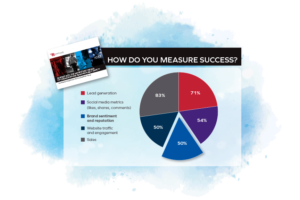
Chances are, you’re already familiar with the typical three-act structure of most stories. It’s a formula that’s applied to virtually every form of storytelling: the lengthy set-up, followed by the confrontation or climax and, finally, the resolution.
When applied to screenwriting, about half of the actual storytelling takes place in Act II, with the rest equally divided between Acts I and III. Every tale needs some context to begin: Who is the protagonist? What is her goal? Similarly, at the end, we want to see all (or at least most) of the story’s loose ends tied up.
But it’s that middle bit – the place where the action takes place, where we come to understand the contours of the main character’s life, what she’s motivated by and whom and what she hates and loves – that keeps us going. We continue reading, watching, listening – all to find out what happened.
Public safety is, of course, full of great stories. Dramatic incidents like a blazing fire, a car chase, a woman going into labor in the supermarket, a devastating hurricane. The firefighter who goes into a building structure to save a family, the EMT skillfully administering CPR, the 911 telecommunicator calmly talking a distraught caller through the worst day of his life.
But how, exactly, do you apply storytelling to your marketing to public safety? Some of the same elements apply, but messaging to professionals in 911, EMS, fire, and law enforcement isn’t exactly the same as “talking” to other industries. Here’s a guide to tailoring your marketing content to resonate with these audiences:
First, figure out your story as an organization.
To know your story at its essence, you have to know who you really are, what you stand for, and how you stand apart as an organization. At RedFlash Group, we follow the straightforward, holistic approach detailed in Patrick Lencioni’s book, The Advantage. In a nutshell, you need to answer these five questions to reveal the essence of your organization’s story:
- Why do we exist? (This goes beyond making money or having a job.)
- How do we behave? (Do you prioritize integrity? Accountability? Creativity? Kindness?)
- What do we do? (Get clear about what you’re really good at — and what you’re just dabbling in.)
- How will we succeed? (Your answer speaks to your company’s unique set of strategies and how what you offer sets you apart from your competition.)
- What is most important, right now? (If everything is important, nothing is.)
Focus on the problem.
By this, we mean train a laser focus on the particular pain point(s) you’re solving for your public safety customers and prospects. Be clear about that and be specific, including how you solve it (don’t just assert that you do). In particular, home in on the ways in which you make work easier or better for them (and/or their patients/callers/communities) that no one else can. These key messages are the foundation on which all of your communications (storytelling) should be built, by the way. Rattling off a list of product features and “talking points” won’t resonate nearly as much and may even be ignored if they aren’t consistently linked to why this product or service exists in the first place.
Stay true.
It’s hard to overstate how important authenticity is to public safety professionals. They pride themselves, and rightly so, on being genuine and naturally want to work with others who communicate in ways that are authentic and clear. You can hone this by doing your homework to deeply understand what’s most important to your audience, even if you don’t have a background in public safety yourself.
Simplify, simplify, simplify.
Walden author Henry David Thoreau had it right about keeping things simple. So when sharing a story about your product, company or customers, stick to the point and don’t overwhelm your listeners or readers with too many details. Your primary goal is to give them a reason to continue the conversation and to make a connection between what they need and what you can do to help.
In Storytelling as Best Practice, Andy Goodman, co-founder and director of The Goodman Center, cites research showing that audiences are much more likely to remember a story than statistics and other kinds of data. When thinking about your business, that can be a hard point to swallow. After all, in marketing, it’s natural to want to share your rapidly growing number of new customers and five-star reviews, the uptick in sales figures, percentage growth and the like. But if you want people to really remember what you’re “saying” – whether in a speech, podcast, blog post or tweet – look for chances to share even a brief narrative about what you do so well.
Step into the background.
Whenever possible, let your customers tell your story. There’s a very good reason testimonials and case studies are so powerful; they take what could just be seen as marketing speak and transform it into real help and solutions that were actually delivered to someone who’s usually a lot like your prospects. A rural agency saved $35,000 in taxpayer dollars thanks to your CAD. A local EMS organization raised its CPR survival rate by 8% in one year, saving an estimated 23 lives. These are truly powerful stories that also create an emotional connection.
Strive to connect.
Best-selling author, researcher and speaker Brené Brown, Ph.D., talks a lot about vulnerability, something she notes is directly linked to our ability to feel connected to others. “Connection, the ability to feel connected, is why we’re here. It’s what gives purpose and meaning to our lives,” she says.
So how do you forge that connection? One way is by being more vulnerable. Ty Bennett, author of The Power of Storytelling, notes that too often in business we tell stories that are what he calls “solution to solution” — a narrative that goes something like, “We made this amazing product and it sold out in five months.” Especially in business, it’s natural to want to shout about our successes. But people are more likely to remember the struggle, the difficulty, the overcoming of odds, even the failures along the way.
So remember to tell your stories, of whatever kind, in a way that will allow people to connect with you and what you do. Aim for a balance between relatability and credibility. (If you’re looking for tips on telling compelling stories, visit “Storytelling Tips & Tricks” at themoth.org; the Moth holds “story slams” all over the world where anyone can share a story on a given theme. Or check out “12 pieces of advice for giving talks that have impact” from TED.com. The advice here mostly applies as well to written stories as to those that are spoken.)
If you’d like help telling or honing your organization’s story to reach public safety, we’d love to talk.






 The RedFlash Group is a GSA Contract Holder under Schedule 541, Advertising and Integrated Marketing Solutions
The RedFlash Group is a GSA Contract Holder under Schedule 541, Advertising and Integrated Marketing Solutions